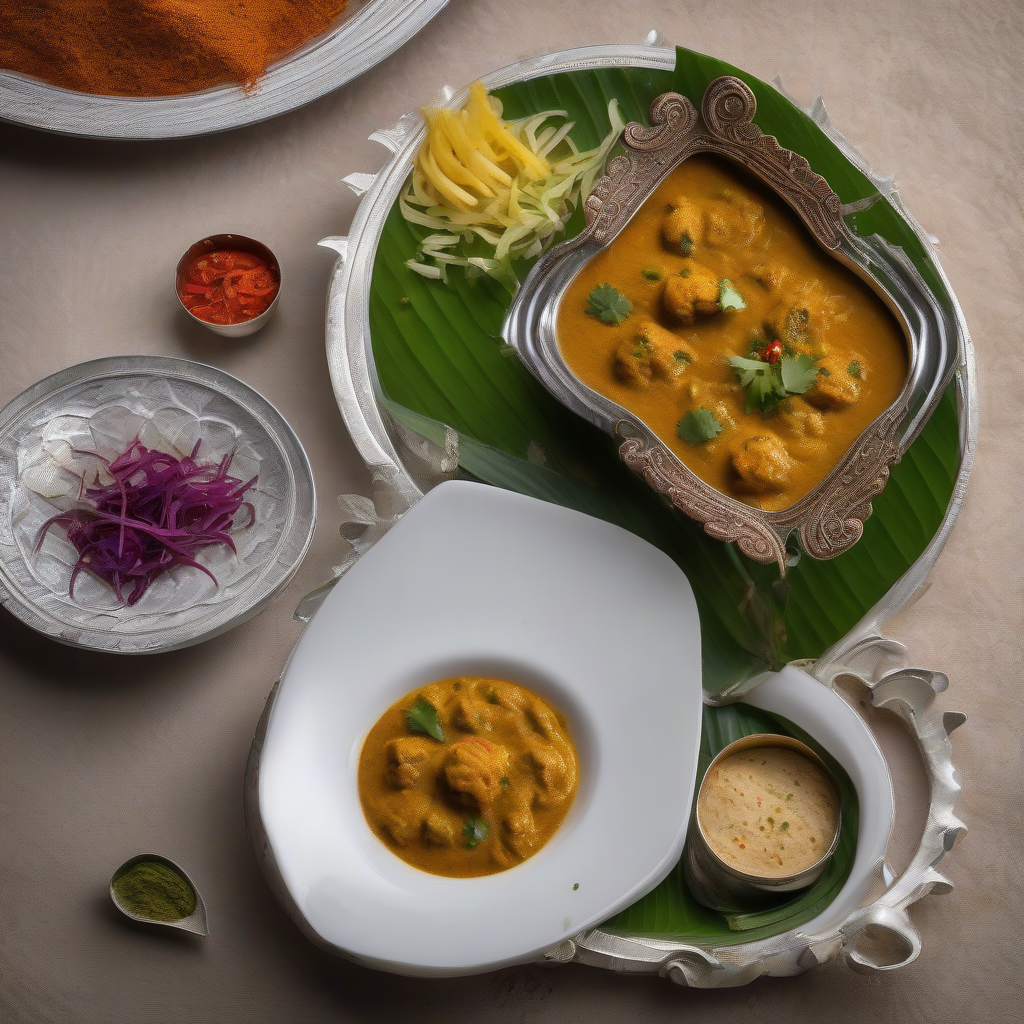Alu Wadi: A Taste of Home, Made with Love!
Namaste Dosto! Kem chho? Kai Zhala? (Greetings friends! How are you? How is it going?) Chef Curry Do’pyaza here, back in your kitchens and hearts, ready to share another delicious gem from my culinary treasure chest. Today, we’re diving into the world of Alu Wadi, a savory, spiced, and utterly addictive snack that’s close to my heart and, I bet, will soon be close to yours too!
Alu Wadi, also known as Patra in some regions, is a Maharashtrian and Gujarati favorite, especially during festivals like Diwali, Ganesh Chaturthi, and even just those cozy monsoon evenings when you crave something warm and comforting. It’s a dish that evokes memories of grandmothers patiently rolling these delectable treats, filling the house with the tantalizing aroma of spices and steamed goodness.
A Little History Lesson, Just for Fun!
The origins of Alu Wadi are a bit hazy, like the mist over the Western Ghats. But it’s believed to have originated in the Maharashtra and Gujarat regions, where colocasia leaves (the “Alu” in Alu Wadi) are readily available. It’s a testament to the ingenuity of our ancestors, who transformed simple ingredients into culinary masterpieces. They used the leaves which are locally available and made something very yummy.
Let’s Get Cooking!
Preparation Time: 30 minutes (plus soaking time for the chana dal)
Cooking Time: 45 minutes
What You’ll Need (Ingredients):
- 1 cup Chana Dal (Split Chickpea), soaked for at least 4 hours or overnight
- 10-12 large Alu Chi Pane (Colocasia Leaves)
- 1/2 cup Besan (Gram Flour)
- 2 tbsp Rice Flour
- 1 tbsp Adrak-Lasun Ni Paste (Ginger-Garlic Paste)
- 1 tsp Lal Mirch Powder (Red Chili Powder)
- 1/2 tsp Haldi Powder (Turmeric Powder)
- 1 tsp Dhania-Jeera Powder (Coriander-Cumin Powder)
- 1/2 tsp Garam Masala
- 1 tbsp Imli Ni Paste (Tamarind Paste)
- 2 tbsp Gud (Jaggery), grated
- 2 tbsp Til (Sesame Seeds)
- 2 tbsp Tel (Oil)
- Salt to taste
- Water, as needed
Let’s Make Some Magic! (Instructions):
- Dal Power!: Drain the soaked chana dal and grind it into a coarse paste. Don’t add too much water; we want a thick consistency.
- Mix it Up!: In a large bowl, combine the ground chana dal paste, besan, rice flour, ginger-garlic paste, red chili powder, turmeric powder, coriander-cumin powder, garam masala, tamarind paste, jaggery, and salt. Add a little water at a time to form a thick, spreadable paste. It should be like a thick batter.
- Leafy Business!: Wash and pat dry the colocasia leaves. Remove the thick stems from the back of the leaves, as they can be tough.
- Layering Time!: Place one leaf flat on a clean surface, with the veins facing up. Spread a thin layer of the chana dal mixture evenly over the leaf. Place another leaf on top, and repeat the spreading process. Continue layering until you have used all the leaves.
- Roll it Up!: Carefully roll the stacked leaves tightly, like a Swiss roll. Secure the ends with toothpicks or tie them with kitchen string.
- Steam Power!: Steam the rolled wadi in a steamer for about 20-25 minutes, or until a knife inserted into the center comes out clean.
- Cool Down!: Let the wadi cool completely before slicing it into 1/2-inch thick rounds.
- Tadka Time!: Heat oil in a pan. Add sesame seeds and let them splutter. Gently place the sliced wadi in the pan and shallow fry them until they are golden brown and crispy on both sides.
- Serve and Enjoy! Garnish with fresh coriander leaves and serve hot with a side of green chutney or tomato ketchup.
Chef’s Tips for Alu Wadi Perfection:
- Leaf Selection: Choose fresh, vibrant green colocasia leaves. Avoid leaves that are wilted or have blemishes.
- Tamarind and Jaggery Balance: Adjust the amount of tamarind paste and jaggery according to your taste. The perfect Alu Wadi should have a balance of sweet, sour, and spicy flavors.
- Steaming is Key: Don’t over-steam the wadi, or they will become mushy.
- Crispy Goodness: Shallow frying the wadi after steaming gives them a delightful crispy texture.
Alu Wadi: Your Way!
- Gas Stove: The classic method! Use a steamer basket over a pot of boiling water.
- Induction Stove: Works just like a gas stove, but with precise temperature control.
- Pressure Cooker: Place the wadi on a trivet inside the pressure cooker with a cup of water. Pressure cook for 2 whistles.
- Oven: You can bake the steamed wadi at 350°F (175°C) for 15-20 minutes, flipping halfway through, for a healthier option.
- Air Fryer: Air fry the sliced wadi at 375°F (190°C) for 8-10 minutes, flipping halfway through, for a crispy and guilt-free treat.
- Microwave: Not recommended as the steaming is best done with moisture.
Nutritional Nuggets (Approximate Values):
Alu Wadi is a good source of fiber, protein, and carbohydrates. It also contains vitamins and minerals like Vitamin A, Vitamin C, and iron. However, it’s important to consume it in moderation, as it can be high in calories due to the frying.
Serving Suggestions:
- Serve Alu Wadi as a snack with tea or coffee.
- Pack it in your lunchbox for a tasty and satisfying meal.
- Serve it as an appetizer at your next party.
- Enjoy it with a dollop of yogurt or a sprinkle of chaat masala.
So there you have it, folks! Alu Wadi, a delightful dish that’s sure to tantalize your taste buds and bring a smile to your face. Now, go forth and create this masterpiece in your own kitchens. Don’t be afraid to experiment with the spices and adjust the recipe to your liking. Remember, cooking is all about having fun and sharing the love!
Try this recipe and share the delicious Alu Wadi with your friends and family.
